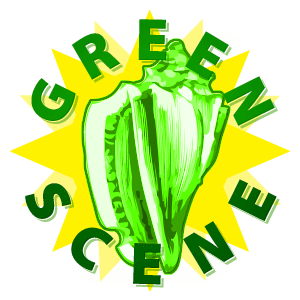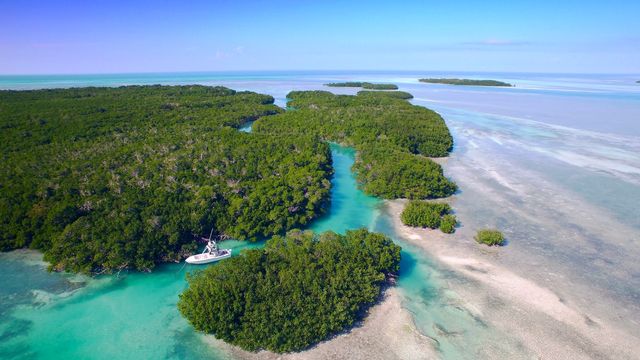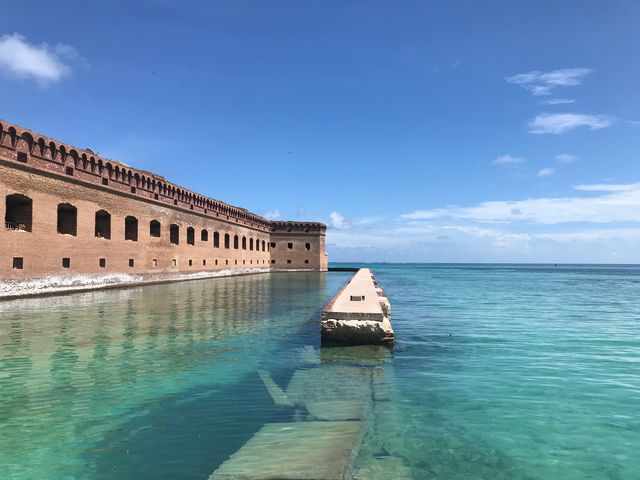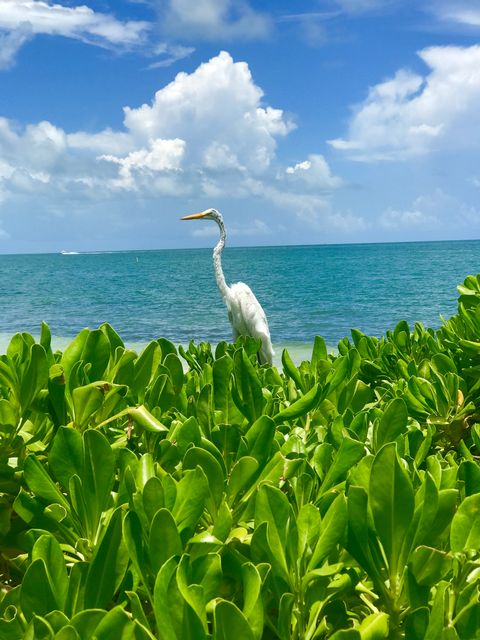Wander the Keys’ Wide-open Spaces
Visitors to the Florida Keys can explore an abundant environment filled with hammocks and rainforest areas or stroll along sandy beaches. But the vast openness of the island chain’s natural environment, where seclusion is intrinsic, also offers "unplugged" opportunities for on-the-water relaxation.
Standup paddling, or paddleboarding, combines mind and body relaxation with healthful exercise and a Keys eco-experience. Paddlers can use the board, ranging in length from 12 to 14 feet, for traversing on a “downwinder” (riding the board backed by tradewinds to cover distance) or as a fishing platform when the winds are nonexistent. And few paddling experiences are more quietly enjoyable than isolated tours through backcountry flats and along the clear, shallow fringes of mangrove forests.
The Florida Keys, where avian rarities abound, also are among the world’s top destinations for year-round bird watching.
Dagny Johnson Key Largo Hammock Botanical State Park, Long Key State Park and Dry Tortugas National Park are among a dozen Keys native habitat stops along the South Florida segment of the Great Florida Birding Trail. Birders can view migrating species such as warblers, white-crowned pigeons, year-round tidal waders and spring-nesting sea birds, terns, noddies, boobies and some unique Keys residents, mangrove cuckoos and roseate spoonbills.
In the Lower Keys, the National Key Deer Refuge’s 9,000-plus acres of mangrove forests, freshwater and salt marsh wetlands, pine rockland forests and tropical hardwood hammocks are an annual stopping point for thousands of migratory birds and a winter home to many North American bird species.
The Middle Keys’ Curry Hammock State Park offers visitors the opportunity to view or count thousands of buteos, accipiters, falcons, raptors and eagles that fly through the Keys each fall between mid-September and early November. It's generally agreed that more peregrine falcons pass through the Keys on their annual migration than through any other location in the U.S.
The Florida Keys are dedicated to the rescue, rehabilitation and release of native and migratory birds back to the wild. Three nonprofit wildlife facilities — Florida Keys Wild Bird Rehabilitation Center, Marathon Wild Bird Center and Key West Wildlife Center — provide humane sanctuary for sick, injured and orphaned birds, as well as habitat for some that cannot safely return to the wild.
Tucked away in the heart of Marathon, Crane Point Museum and Nature Center spans a 63-acre tropical oasis of hardwood trees, educational displays and trails for adults and children to take refreshing walks through history and nature.
Located at mile marker 50.5, bayside, Crane Point’s slightly elevated patch of hammock is where Bahamian immigrant George Adderley and his family set up a homestead in the early 20th century.
The Adderley home and its beautiful surroundings remain, and are a popular stop along the 2.5 miles of trails and wooden walkways crisscrossing the hammock. Stroll along the rustic interpretive nature trails to discover endangered native foliage, unusual geologic features, colorful exotic vegetation and even ancient ocean fossils.
Whether on land or water, the Keys’ open spaces offer seemingly endless opportunities to reconnect with the natural world and discover the renewal that comes from time spent in nature. To learn more about exploring the island chain’s unique environment, visit fla-keys.com/eco-tourism/.
Add Dry Tortugas National Park to a bucket list of wildlife, snorkeling and bird watching adventures.
Florida Keys are an annual stopping point for thousands of migratory birds and a winter home to many North American bird species.




